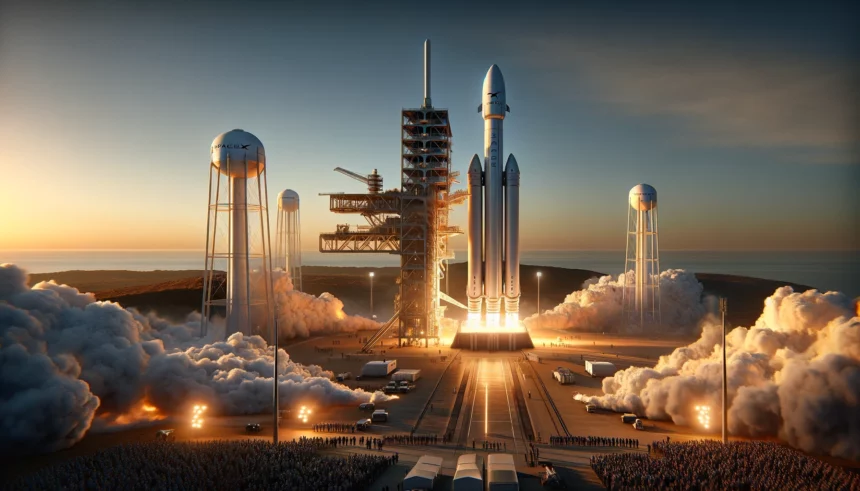SpaceX is gearing up for a crucial test on Thursday with its third launch attempt of Starship, the behemoth rocket poised to play a pivotal role in NASA’s lunar astronaut missions and Elon Musk’s vision of Martian colonization. Despite two previous attempts that ended in dramatic explosions, SpaceX remains undeterred, leveraging a fast-paced development strategy known for its embrace of trial and error—a method that has yielded significant advancements for the company in the past.
The launch is scheduled to take place at SpaceX’s Texas facility, with a launch window opening at 7:00 am local time (1200 GMT), following the FAA’s approval. SpaceX plans to host a live webcast, offering a front-row seat to the event 30 minutes before lift-off.
Starship, which stands at a towering 397 feet (121 meters) when fully assembled, surpasses the Statue of Liberty by 90 feet, making it the largest rocket to ever attempt flight. Its Super Heavy Booster is designed to produce an unparalleled 16.7 million pounds of thrust, significantly outmatching NASA’s operational Space Launch System (SLS) in power.
This third test aims to push the boundaries further than before, with goals including testing the payload door’s operation and attempting to re-ignite the ship’s engines in space—a critical step towards enabling future Starship models to refuel in orbit. If successful, Starship will achieve orbit and then execute a controlled descent into the Indian Ocean, demonstrating its potential as a game-changer for space logistics and exploration.
SpaceX’s journey with Starship began in 2018, focusing initially on short flights. However, the transition to integrated tests has been challenging, with both previous attempts resulting in failure. The first integrated test in April 2023 saw the rocket self-destruct after failing to separate its stages, while a second attempt in November showed marginal improvement before ending in another explosion.
Despite these setbacks, SpaceX’s iterative approach has been instrumental in the success of its Falcon 9 rockets, Dragon capsules, and the Starlink satellite network. As the company works to refine Starship for its lunar ambitions, including the Moon mission slated for 2026, the stakes are high. Not only must SpaceX demonstrate Starship’s launch and landing capabilities, but it must also prove the feasibility of orbital refueling—a crucial component for longer space voyages.
As SpaceX prepares for Thursday’s launch, the space community watches closely, hopeful that this attempt will mark a significant milestone in humanity’s quest to return to the Moon and reach further into the cosmos.
















